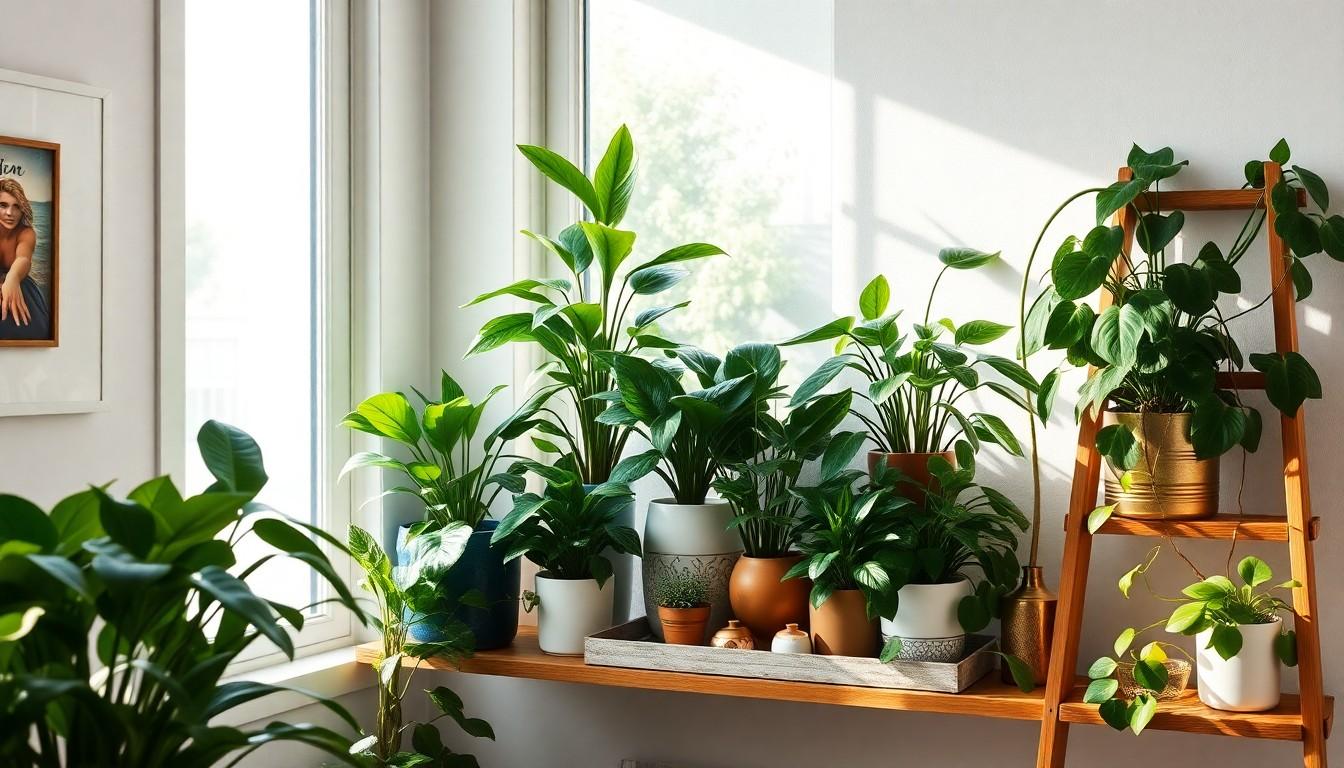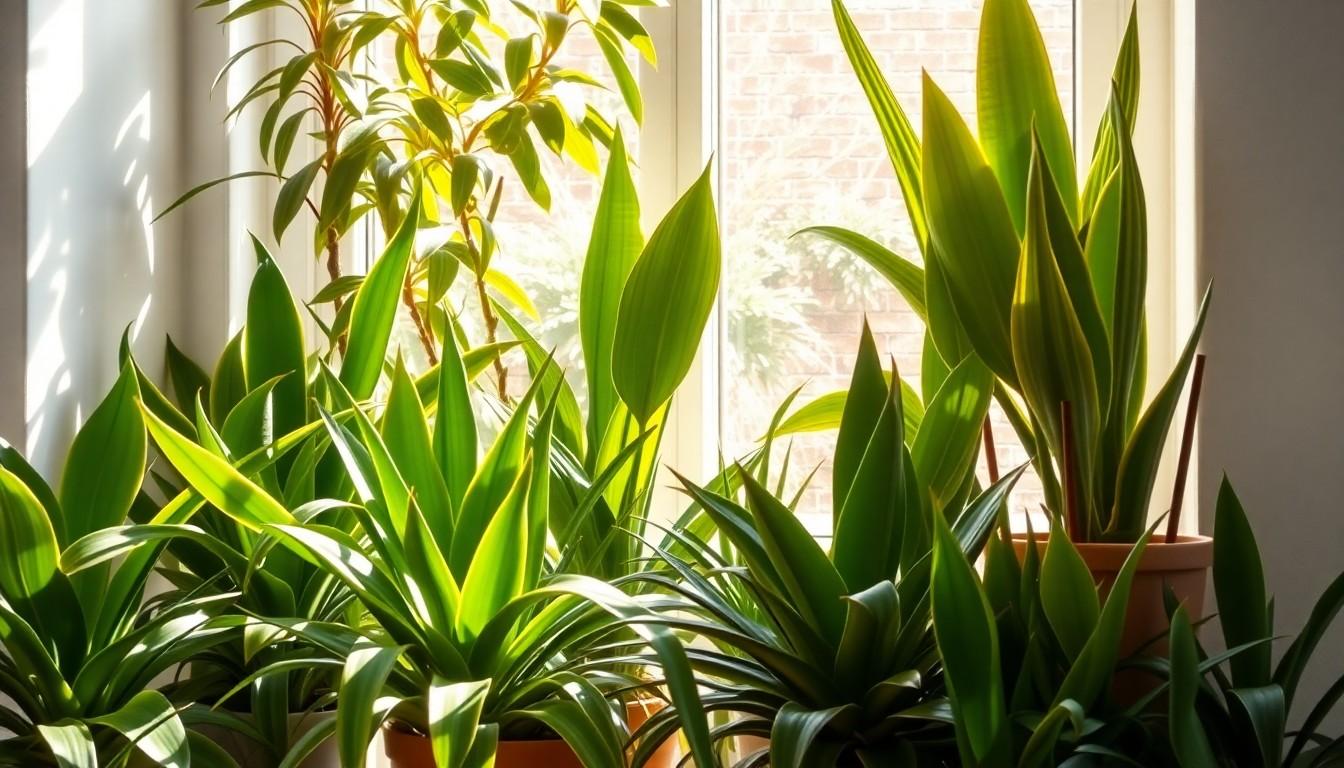Physical Address
304 North Cardinal St.
Dorchester Center, MA 02124

Imagine transforming your home into a lush oasis, all while impressing your friends with your newfound plant-parent status. House plants not only elevate your decor but also purify the air, making your space feel fresh and vibrant. With a little help from the right pictures and names, you’ll soon be the proud owner of a thriving indoor jungle that even your cat will envy.
House plants enhance indoor environments with beauty and functionality. Below are popular categories, showcasing names and examples of visually appealing plants.
Low-light house plants thrive in areas with limited sunlight. Common examples include the Snake Plant, with its striking upright leaves, and the ZZ Plant, known for its glossy, dark green foliage. Pothos, characterized by its heart-shaped leaves, adds a pop of green and is easy to maintain. Spider Plants, with their arching leaves and small offshoots, also adapt well to lower light. Each of these plants makes it simple to bring nature indoors, even in less-than-ideal lighting conditions.
Air purifying house plants significantly improve indoor air quality. The Peace Lily, recognized for its elegant white blooms, effectively filters harmful toxins. Boston Ferns, with their lush fronds, enhance air freshness. Rubber Plants, boasting rich green leaves, also contribute to cleaner air. Aloe Vera, known for its soothing properties, helps purify surroundings. Adding these plants to homes not only beautifies spaces but also promotes healthier living environments.

House plants require specific care to thrive. Understanding their needs helps ensure a healthy indoor environment.
Consistent watering is crucial for house plants. Most plants prefer soil that is moist but not waterlogged. Overwatering can lead to root rot, while underwatering may cause wilting. It’s useful to check the top inch of soil for dryness and adjust accordingly. For plants like Snake Plants and ZZ Plants, less frequent watering suffices, as they store moisture in their leaves. In contrast, high-drainage needs exist for plants such as Aloe Vera, which prefer slightly drier conditions.
Light conditions have a significant impact on plant growth. Many house plants thrive in bright, indirect sunlight, while others tolerate low-light environments. Snake Plants adapt well to low light, making them ideal for darker corners. Conversely, Pothos enjoys bright, indirect light and can grow rapidly under optimal conditions. Understanding each plant’s light preference ensures healthy foliage and vibrant blooms. Regularly rotating plants can also maximize exposure to available light, promoting balanced growth.
Display techniques transform house plants into striking focal points. Wall-mounted planters create vertical gardens, maximizing floor space and showcasing greenery. Hanging pots bring a whimsical touch, allowing plants to cascade gracefully in areas like kitchens and living rooms.
Ladder shelves offer a stylish way to display multiple plants at varying heights. Placing plants alongside books and decorative items enhances an eclectic aesthetic. Use decorative trays to group smaller plants, creating charming vignettes that catch the eye.
Repurposing household items as planters adds character to displays. Vintage teacups, tin cans, and wooden crates can serve as creative containers. These unique arrangements reflect personal style while providing a home for beloved plants.
Utilizing plant stands elevates house plants, making them more visible and adding dimension to rooms. Adjustable stands can accommodate different plant sizes, showcasing a variety of species together. Arranging plants based on color or leaf shape can create harmonious designs.
Incorporating plants within furniture can seamlessly integrate greenery into decor. Coffee tables or side tables with built-in planters bring nature directly to living spaces. These designs maintain functionality while enhancing the environment.
Lighting plays a crucial role in plant displays. Placing plants on windowsills ensures they receive adequate sunlight. Using grow lights for low-light plants extends opportunities for display in dim areas.
Creative display methods encourage plant lovers to express their personalities. Each arrangement contributes to a vibrant atmosphere while enhancing a home’s visual appeal. Utilizing these strategies allows house plants to shine in any space.
House plants offer more than just aesthetic appeal; they enrich living spaces and contribute to healthier environments. By understanding the specific needs of each plant and exploring creative display methods, anyone can cultivate a thriving indoor garden. Embracing the journey of plant parenting not only enhances home decor but also fosters a deeper connection with nature. With the right choices and care, transforming a home into a vibrant sanctuary filled with life is entirely achievable.